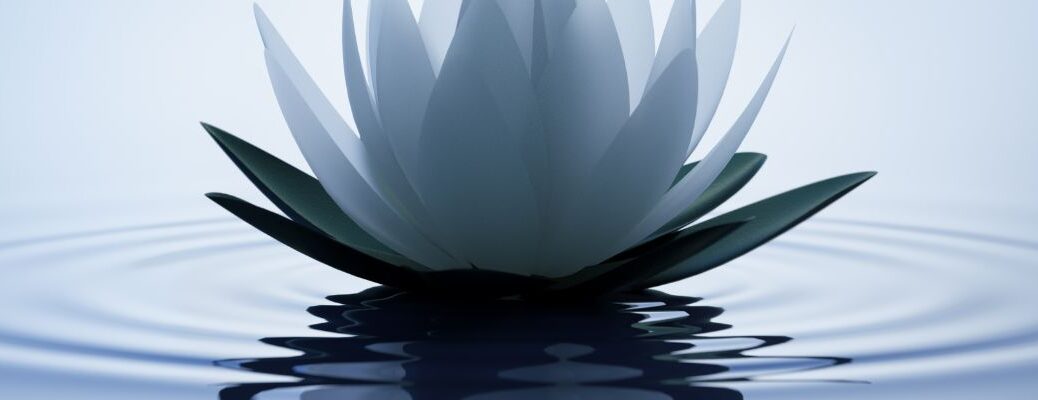Meditation is sometimes shrouded in mystery and confusion, even though it can be an incredibly simple practice. While there are many different types of meditation, it can generally be defined as the practice of relaxing the mind, letting go of thoughts as they arise and surrendering to the moment.
Scientific research undertaken in recent decades has found that regular and effective meditation practice has significant health benefits. Measurable reductions in blood pressure, anxiety and depression have been repeatedly reported among people who regularly meditate.
The meditation process often begins by focusing on something. Anything will do. Most people choose to focus on their breath, while others choose to focus on a single, unchanging sound, or a flower or candle flame. There’s no right, or absolute way, only the way that works best for the individual. Most people notice the inevitable array of random and distracting thoughts when they begin, and over time, get better at letting them go without analysing them or seeking explanations for them.
Meditation and creativity
There’s a great deal of contemporary research to demonstrate that regular, brief meditation practice (for a little as 3 minutes per day) can have a significant impact on inspiration and creativity. Inspiration is that fleeting, aha! moment when a new idea seems to suddenly download into your conscious stream of thought. Creativity is your capacity to do something unique with that new thought. Having a mind that’s clear and calm helps both inspiration and creativity to flourish.
The flow of mental clarity and well-being that comes from regular meditation practice tends to open the mind to creativity. Many people find they are far more productive and successful when they take time out of a busy day to meditate, even if only for a few minutes. A more intuitive and effortless way of being seems to emerge after meditation; one in which things are accomplished more effectively and in a more creative way.
In their book Mindfulness (2011) Williams and Penman state that meditation and mindfulness bring us out of the mode of ‘doing’ into a mode of ‘being’ in which our preconceived ideas are no longer with us. This is because our mind is more open to a range of possibilities when the core of our being is calm and alert.
Sally Newbigging raises the point of judgement and preconceptions in her book Mind Calm (2014). She calls it ‘the judgement game’ and says must stop before intuition and creativity can emerge.
Jon Kabat-Zin makes a similar point in his book Wherever you go, there you are (2004), asserting that creativity benefits from detachment from all the conscious effort required to make or do something. He explains that meditative practice “… opens channels to deep reservoirs of creativity, intelligence, imagination, clarity, determination, choice and wisdom within us.”
In his book Flow (2008) Mihaly Csikszentmihaly identified the blissful state of complete immersion in moments of creativity, describing it as a state in which nothing else seems to exist but the creative work itself. This state of bliss, he found, is common among high performing musicians, artists, writers, and athletes, and it can only be reached with a calm and open mind.
A great deal has been written about creative visualization during the last few decades. Most of the literature has been offered to readers who want to improve the circumstances in their lives and / or achieve specific goals. There’s also some literature about using creative visualization for healing purposes.
Whilst these are fascinating, my interest has always been in the possibility of using creative visualization techniques to access the imagination and enhance creative practice. To suggest that our internal resources and imagination comprise a gold mine is an understatement. Almost everyone has a wealth of untapped potential that can be accessed through creative visualization techniques which is probably why they’ve been part of Buddhist spiritual practice for centuries.
Yet the term ‘creative visualization’ was only coined by 20th century athletes who were seeking ways to improve their performance by repeatedly visualizing their success until their unconscious minds were programmed to make their body take the necessary physical actions required to achieve success.
The practice of creatively visualizing success has also been used by countless celebrities, entertainers, and public speakers to help them achieve top levels of performance. One famous example is actor Jim Carey who, in 1987, wrote a cheque to himself for $10 million for ‘acting services rendered’. He post-dated the cheque to 1995, by which time he’d earned that exact amount of money for his performance in the film Dumb and Dumber. Not so dumb, hey?
In her best-selling book The Artist’s Way: A Spiritual Path to Higher Creativity (2002) Julia Cameron talks about visualizing goals so clearly, and in so much detail, we can begin to feel we’ve already accomplished them and are living with the results.
In her book Creative Visualization (2002) Shakti Gawain defines creative visualization as “… the technique of using your imagination to create what you want in your life.” Drawing upon the science of physics, she says that at the most fundamental level, all things in existence are made from tiny, vibrating particles and their energy is in a constant state of movement. By tapping into that energy through meditation and creative visualization, she says we can directly shape the circumstances of our lives.
Ronald Shone offers some simple exercises in his book Creative Visualization (1988) to help readers reconnect with their imagination by calling upon their five senses of sight, sound, taste, smell, and touch. My book Creative Visualization: Access your imagination and enhance your creative practice (2016)offers several exercises to activate all five senses; aware that each reader will have at least one or two senses that are stronger than the others.
These are just a few examples from the vast body of published research on the topic of creative visualization. But how do we ‘do’ creative visualization?
Starting with guided visualizations
For anyone completely new to the concept and practice, it can help to begin with a guided visualization exercise. Usually, this involves closing the eyes, relaxing, and listening to someone’s voice as they guide you on a journey to a beautiful place, or a safe place, or a successful outcome, or whatever the purpose of the guided visualization may be.
In my online course, Creative Spirit, I guide the listener through beautiful scenes, asking them to notice what they see, hear, smell, touch and taste. After each guided visualization, I talk them through a series of exercises that capture what they experienced, and how they could use it in their creative practice. Here is a simple one I like to begin with:
Feel the space around you, claiming it as your own. Focus on your breathing. Breathe slowly and peacefully. Release any areas of tension in your body. Feel your muscles relax with each breath. Let your breathing slow down as your body relaxes.
When you’re ready, picture in your mind, a place where you can completely relax. Imagine what this place looks like, sounds like and feels like. Make it a place where you feel calm, safe, and deeply relaxed, without be bothered by anything or anyone. This place could be anywhere. It’s your choice. You’re completely in control of this experience. Ask yourself:
- Are you alone here, or is someone with you?
- Are there any animals or birds?
- Is there any natural vegetation, plants, or flowers in this place?
- Is there water around you, or just solid land?
- Do you hear the sounds of nature or music, or just silence?
- What colors do you see?
- What temperature is it?
- Is there a breeze or is the air still?
Everything in this place is created by you, so you can change the look and feel of this place at any time you like. You may wish to sit still and just enjoy this place, or you may wish to be active and explore. The choice is yours. Take your time to get to know this place in as much detail as possible, knowing that it’s your place and you can return any time you wish.
Integrating the new insights
Slowly bring your attention back to the present moment. Bring your awareness into your body. Stretch your fingers and toes. Stretch your arms and legs. Roll your shoulders up and around behind you. Take two or three deep energizing breaths and exhale fully. Slowly open your eyes. Take a few moments to adjust. Notice the feeling of your body where it’s in contact with the ground or chair you’re sitting on. Pick up your journal, recording device or sketchbook and follow the action points below.
Action: Describe your special ‘go to’ place in detail. Capture as much detail as possible. Comment on the light, color, shapes, movements, sounds, and feelings evoked in this visualization. Be sure to use all 5 senses.
This type of action works well for creative writers. There are, however, other actions that can be used to enhance other forms of creativity, and I offer these in the course and my book. I also remind my readers and listeners that when they’re in the thick of the creative work, more ideas will come to them, because action stimulates thought and thought stimulates action and so on. It’s a self-sustaining cycle of creative energy.
The key is to know yourself well enough to know what’s happening for you at various points in the creative process, for example:
- Sometimes you may need to go off on a tangent and explore something new, but sometimes you need to stay on track and follow a concept to its logical conclusion.
- Sometimes you need solid chunks of uninterrupted time to do the work, but sometimes you’ll be better off doing it in short bursts.
- Sometimes you’ll finish a piece of work quite suddenly, knowing that it’s fully complete, and sometimes the ending just can’t come soon enough.
- Sometimes you need to ask your inner critic to be silent and sometimes you need to listen to it.
These are some of the decision points that people can struggle with at various points in their creative work, and it can be helpful to know when your inner critic is working for you and when it’s working against you. My advice has always been to send the inner critic out of your creative space during the early phases of your creative work and invite it back in when you’re finished. Find the book on Amazon, worldwide.




